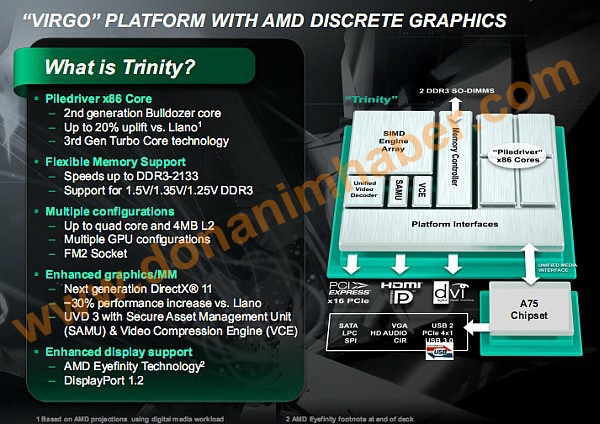Further details concerning the successor to AMD's A-Series Llano APUs - Trinity - have emerged, courtesy of the slide below.

While we know that Trinity APUs will be crafted for AMD's FM2 socket, it seems that the current A75 chipset will be compatible with the next-gen offerings. AMD's also talking-up a 20 per cent performance increase, compared to its current Llano APUs. On the graphics front, there's also a claimed performance boost of up to 30 per cent.
What Trinity is also set to bring to the table, is support for RAM speeds up to DDR3-2,133MHz - at voltage levels ranging from 1.25V up to 1.5V.
Based on the chip manufacturer's Piledriver architecture, Trinity is said to serve-up third-gen Turbo Core technology, AMD Eyefinity, and DisplayPort 1.2 support.
Image Source: DonanimHaber













